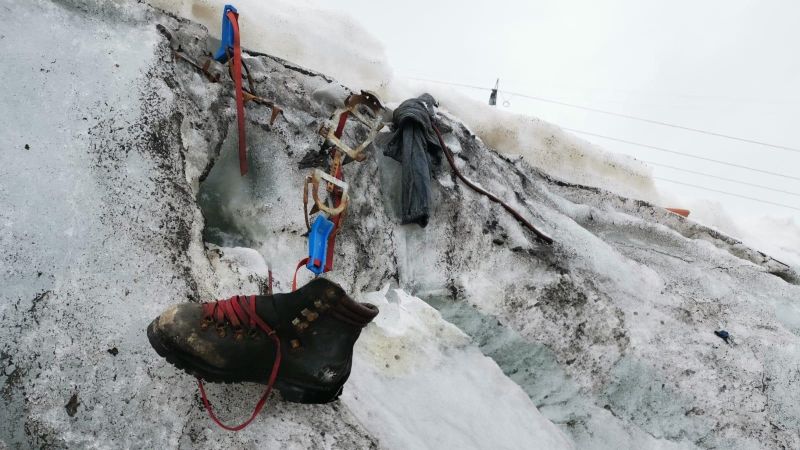
Melting ice reveals remains of climber lost on glacier 37 years ago
The remains of a German mountain climber who went missing 37 years ago while hiking along a glacier near Switzerland’s iconic Matterhorn have been recovered, as melting glaciers lead to the re-emergence of bodies and objects thought to be long lost.
Climbers hiking along the Theodul Glacier in Zermatt on July 12 discovered human remains and several pieces of equipment, police in the Valais canton said in a statement Thursday.
“DNA analysis enabled the identification of a mountain climber who had been missing since 1986,” police said in a statement. “In September 1986, a German climber, who was 38 at the time, had been reported missing after not returning from a hike.”
Police said that searches for the disappeared climber at the time proved unsuccessful.
The climber’s remains underwent a forensic analysis at Valais Hospital, allowing experts to link them to the 1986 disappearance, police added Thursday.
Police did not provide additional information of the German alpinist’s identity nor on the circumstances of his death.
Authorities released a photograph of a lone hiking boot with red laces sticking out of the snow, along with some hiking equipment that had belonged to the missing person.
“The recession of the glaciers increasingly brings to light missing alpinists who were reported missing several decades ago,” police concluded in the statement.
The discovery of the remains of the German climber comes as scientists revealed earlier this week that this month is on track to be the planet’s hottest in around 120,000 years.
“As the glaciers retreat, any material – including people who have fallen into or onto them and have been buried by subsequent snow – will emerge. All glaciers are melting very fast and receding across the European Alps,” Nicholson said.
‘Long-term’ melting trend
Last year, Swiss glaciers recorded their worst melt rate since records began more than a century ago, losing 6% of their remaining volume in 2022, nearly double the previous record of 2003, Reuters reported.
The melt was so extreme in 2022 that bare rock that had remained buried for millennia re-emerged at one site while bodies and even a plane lost elsewhere in the Alps decades ago were recovered.
In 2015, the remains of two Japanese climbers who went missing on the Matterhorn in a 1970 snowstorm were found and their identities confirmed through the DNA testing of their relatives.
“The glaciers are undergoing a long-term trend of melting,” Nicholson said, adding the trend is expected to continue, with “low snow years” contributing to the problem.
“The reduced snow amount is also partly coupled to the change in temperatures, because what happens is some of the precipitation that … would have come in the form of snow, now comes in the form of rain. That does not help the glaciers, it works against them,” she added.
Even if ambitious climate targets are met, up to half of the world’s glaciers could disappear by the end of the century, according to recent research.
“If we continue with the emissions we are transmitting now, we are looking at a largely deglaciated Alps region for generations to come – and that is very sad,” Nicholson warned.
The disappearance of glaciers will have cascading impacts.
Glaciers play a vital role in providing fresh water for nearly 2 billion people and they are also a key contributor to sea level rise.
“Some regions of the world are much more dependent on the glacier mountains than we are here – in some cases they are much more vulnerable than the Alps,” Nicholson added.
